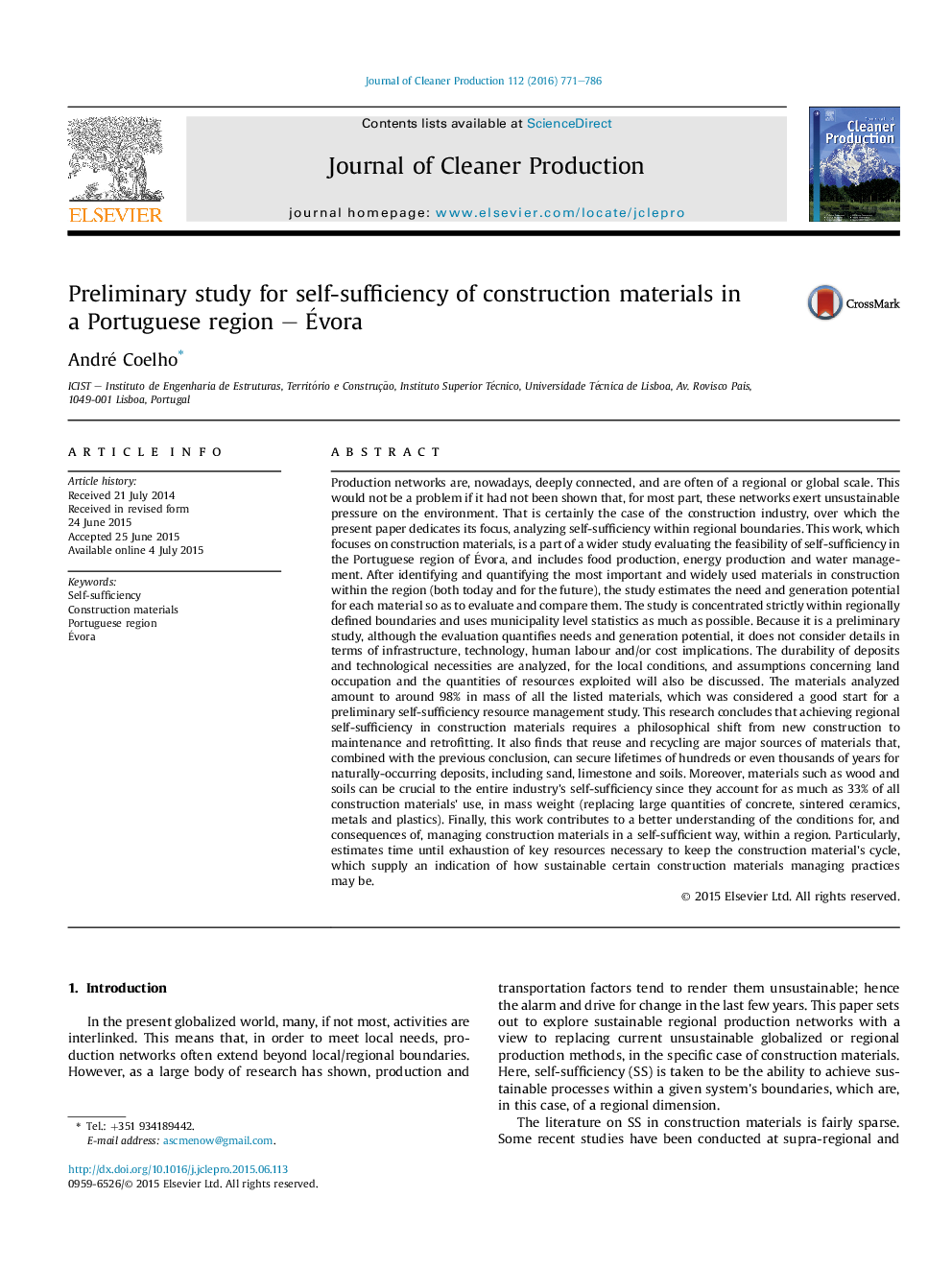| کد مقاله | کد نشریه | سال انتشار | مقاله انگلیسی | نسخه تمام متن |
|---|---|---|---|---|
| 10688085 | 1017970 | 2016 | 16 صفحه PDF | دانلود رایگان |
عنوان انگلیسی مقاله ISI
Preliminary study for self-sufficiency of construction materials in a Portuguese region - Ãvora
دانلود مقاله + سفارش ترجمه
دانلود مقاله ISI انگلیسی
رایگان برای ایرانیان
موضوعات مرتبط
مهندسی و علوم پایه
مهندسی انرژی
انرژی های تجدید پذیر، توسعه پایدار و محیط زیست
پیش نمایش صفحه اول مقاله

چکیده انگلیسی
Production networks are, nowadays, deeply connected, and are often of a regional or global scale. This would not be a problem if it had not been shown that, for most part, these networks exert unsustainable pressure on the environment. That is certainly the case of the construction industry, over which the present paper dedicates its focus, analyzing self-sufficiency within regional boundaries. This work, which focuses on construction materials, is a part of a wider study evaluating the feasibility of self-sufficiency in the Portuguese region of Ãvora, and includes food production, energy production and water management. After identifying and quantifying the most important and widely used materials in construction within the region (both today and for the future), the study estimates the need and generation potential for each material so as to evaluate and compare them. The study is concentrated strictly within regionally defined boundaries and uses municipality level statistics as much as possible. Because it is a preliminary study, although the evaluation quantifies needs and generation potential, it does not consider details in terms of infrastructure, technology, human labour and/or cost implications. The durability of deposits and technological necessities are analyzed, for the local conditions, and assumptions concerning land occupation and the quantities of resources exploited will also be discussed. The materials analyzed amount to around 98% in mass of all the listed materials, which was considered a good start for a preliminary self-sufficiency resource management study. This research concludes that achieving regional self-sufficiency in construction materials requires a philosophical shift from new construction to maintenance and retrofitting. It also finds that reuse and recycling are major sources of materials that, combined with the previous conclusion, can secure lifetimes of hundreds or even thousands of years for naturally-occurring deposits, including sand, limestone and soils. Moreover, materials such as wood and soils can be crucial to the entire industry's self-sufficiency since they account for as much as 33% of all construction materials' use, in mass weight (replacing large quantities of concrete, sintered ceramics, metals and plastics). Finally, this work contributes to a better understanding of the conditions for, and consequences of, managing construction materials in a self-sufficient way, within a region. Particularly, estimates time until exhaustion of key resources necessary to keep the construction material's cycle, which supply an indication of how sustainable certain construction materials managing practices may be.
ناشر
Database: Elsevier - ScienceDirect (ساینس دایرکت)
Journal: Journal of Cleaner Production - Volume 112, Part 1, 20 January 2016, Pages 771-786
Journal: Journal of Cleaner Production - Volume 112, Part 1, 20 January 2016, Pages 771-786
نویسندگان
André Coelho,